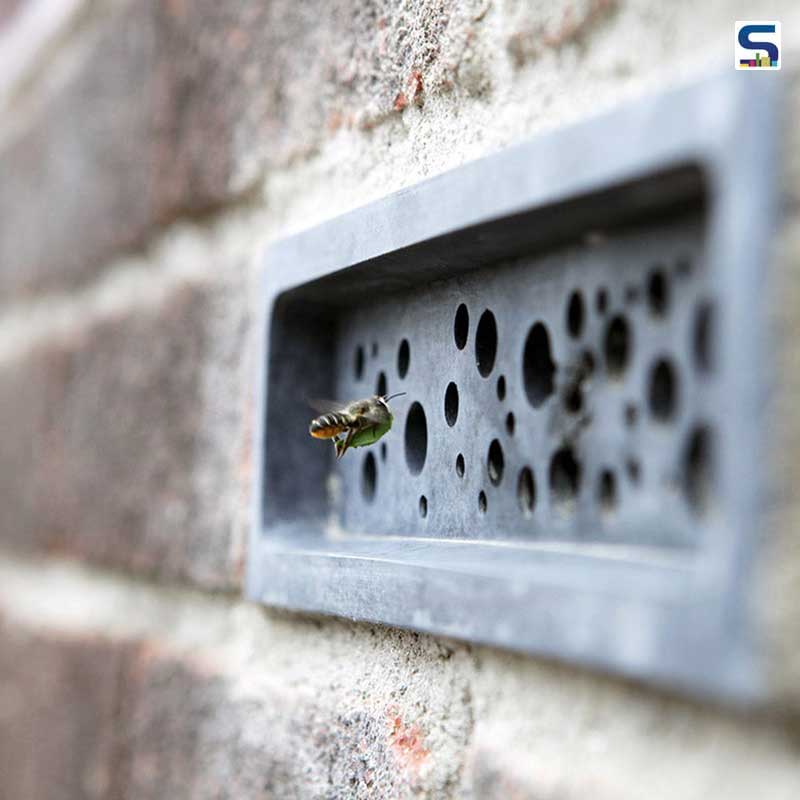
The Bee Brick solitary bee house, mindfully designed by the Cornwall-based design studio Green&Blue, is an architectural brick with several holes that offer mini homes for solitary bees. Ideal for garden lovers and nature lovers, the Bee Brick is not only an innovative nesting site for the bees but also an aesthetically pleasing alternative to standard brick and make a real statement in any bee-friendly garden or building. Reportedly, the brick provides a stylish nesting site for red mason and leafcutter bees, amongst other cavity nesting species.
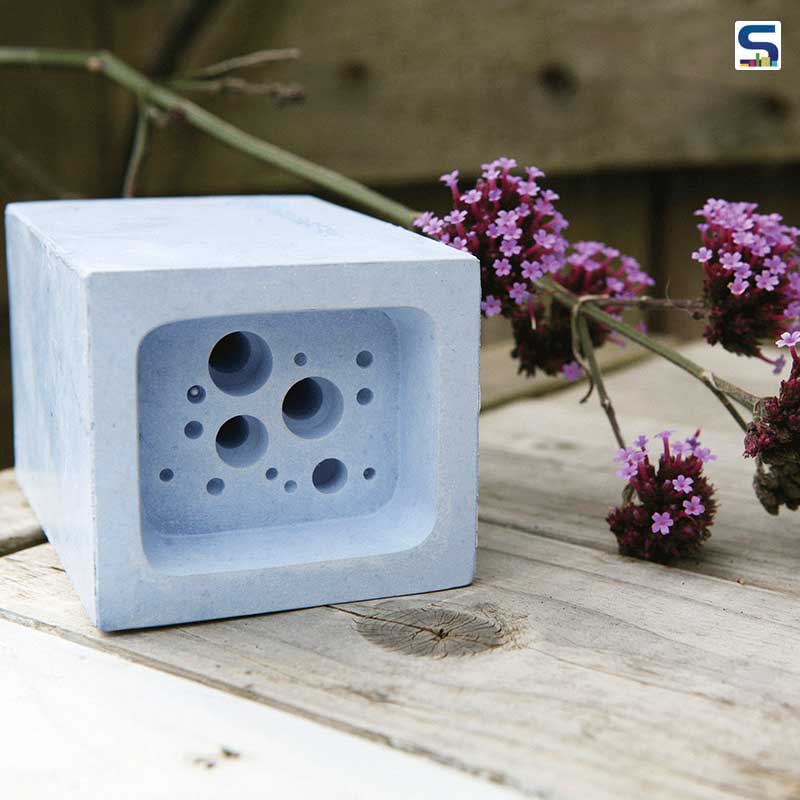 Bee Brick is not only an innovative nesting site for the bees but also an aesthetically pleasing alternative to standard brick.
Bee Brick is not only an innovative nesting site for the bees but also an aesthetically pleasing alternative to standard brick.
Solitary bees have neither a queen nor honey to protect, which makes them non-aggressive and won’t sting unless they are provoked. The Bee Brick aims at increasing the declining bee population and creating a bee-friendly planting.
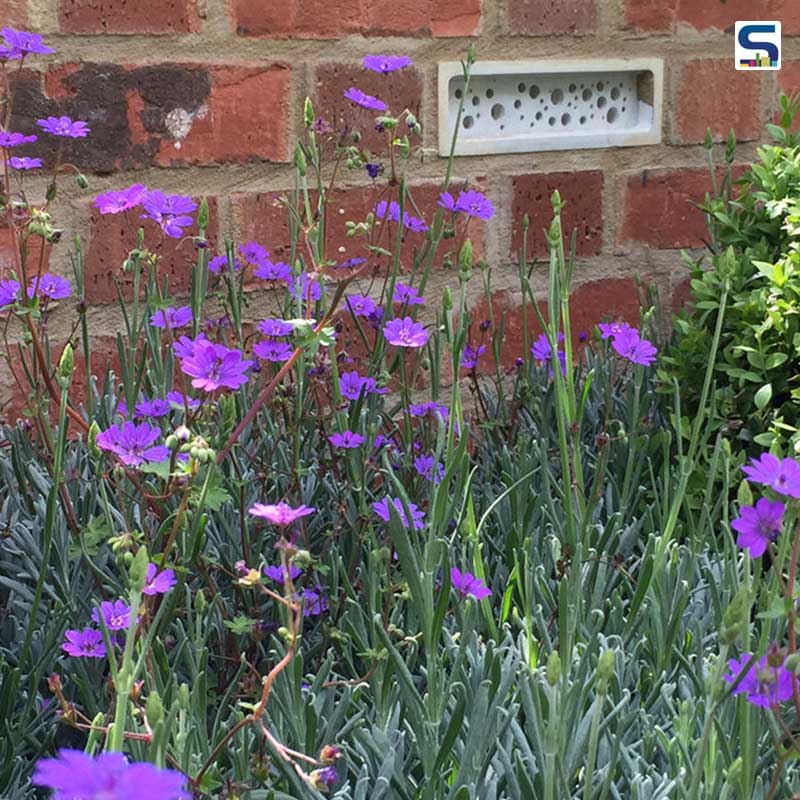 It can be positioned in a warm sunny spot with no vegetation in front of the fascia, preferably south facing.
It can be positioned in a warm sunny spot with no vegetation in front of the fascia, preferably south facing.
Made from concrete by using nearly 75 per cent recycled material from the Cornish China clay industry, the Bee Brick comes in 215mm x 105mm x 65mm size. It is solid at the back and has moulded cavities where bees will lay eggs, sealing the entrance with mud or chewed up vegetation.
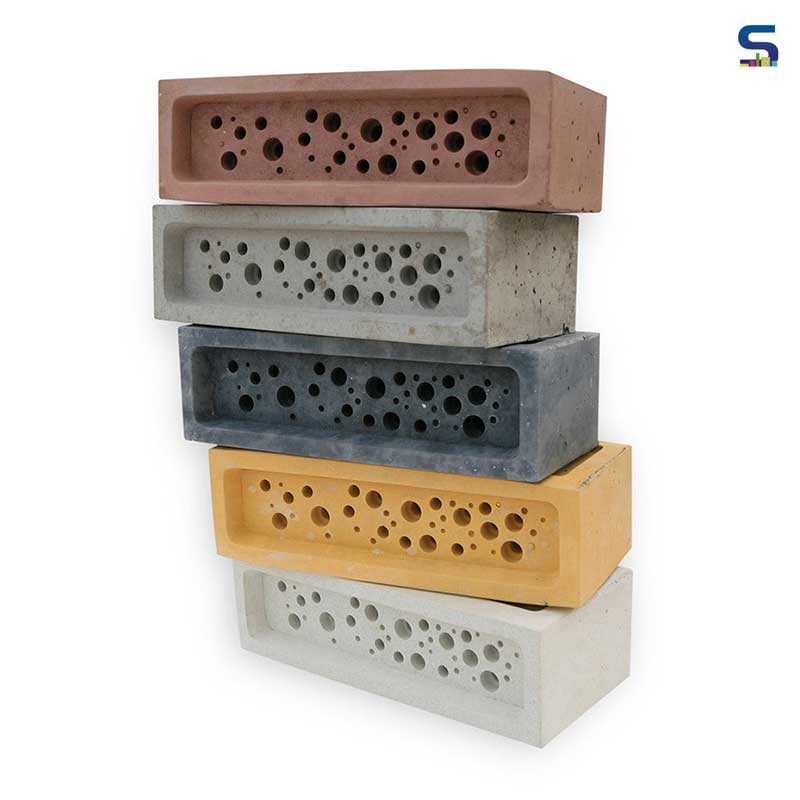
Made from concrete by using nearly 75 per cent recycled material from the Cornish China clay industry, the Bee Brick comes in 215mm x 105mm x 65mm size.
It can be positioned in a warm sunny spot with no vegetation in front of the fascia, preferably south facing. It is best to place the brick at least 1m from the ground with no upward limit. The brick can be used in urban spaces as well where there may not be alternative nesting sites for bees. In such case, the brick can be built into a wall or building or can be simply left at a standstill in the garden.
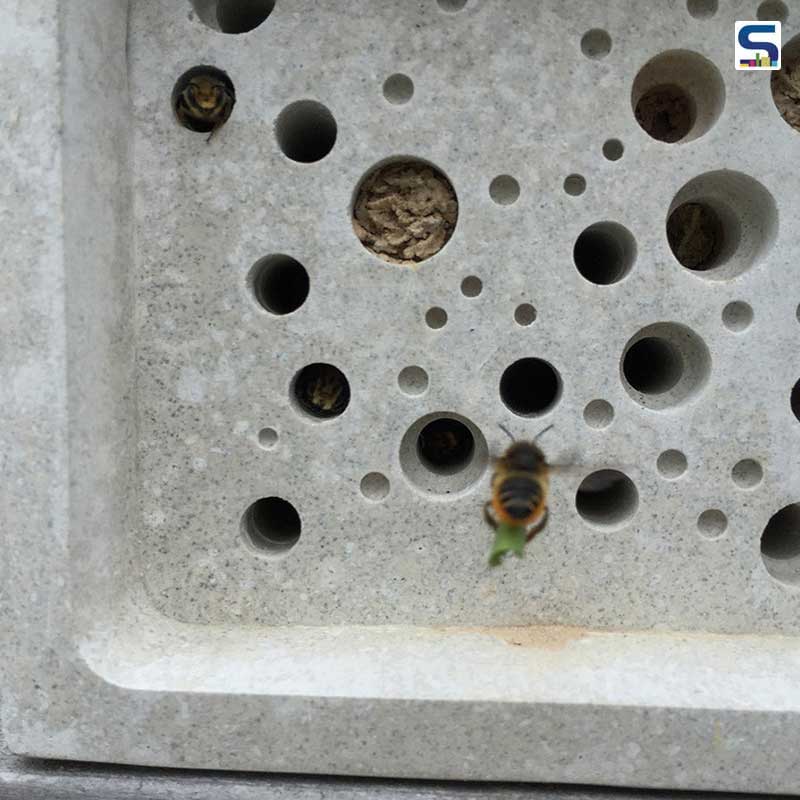 It is solid at the back and has moulded cavities where bees will lay eggs, sealing the entrance with mud or chewed up vegetation.
It is solid at the back and has moulded cavities where bees will lay eggs, sealing the entrance with mud or chewed up vegetation.
Image credits: Green&Blue